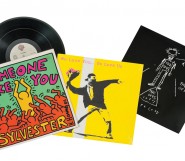Lot #1 - Jeffrey Smart
-
Auction House:Deutscher and Hackett
-
Sale Name:Important Australian + International Fine Art Auction
-
Sale Date:10 May 2017 ~ 7pm
-
Lot #:1
-
Lot Description:Jeffrey Smart
(1921 – 2013)
Kapunda Church, 1946
watercolour on paper
38.0 x 48.0 cm
signed lower left: JEFF SMART
EXHIBITED: Autumn Exhibition, Royal South Australian Society of Arts, Adelaide, 9 – 25 May 1946, cat. 114 (as “Kapunda”); Jeff Smart / Jacqueline Hick, David Jones Art Gallery, Sydney, 4 – 16 November 1946, cat. 27; Paintings by Jacqueline Hick and Jeff Smart, Georges Gallery, Melbourne, 4 – 13 March 1947, cat. 8 (as “Kapunda”); Minnie Crouch Memorial Competition for Watercolours, Ballarat Art Gallery, 10 – 20 March 1948 (as “Kapunda”); Exhibition of Oils and Watercolours by Jeff Smart, John Martin’s Art Gallery, Adelaide, May 5 – 18, 1948, cat. 30 (as “Kapunda”). Deutscher and Hackett gratefully acknowledges the assistance of Stephen Rogers, Archivist for the Estate of Jeffrey Smart, in cataloguing this work. -
Provenance:Judith Anne Ingoldby, Adelaide, a gift from the artist; Private collection London, acquired from the above 1980
-
References:Quartermaine, P., Jeffrey Smart, Gryphon Books, Melbourne, 1983, cat. 109, p. 101
-
Notes:Jeffrey Smart’s eye-catching watercolour, Kapunda Church, 1946, is no mere documentation of a particular place set in time. It is rather the creation of a mood or feeling, its strong theatrical appeal engaging the viewer in an enquiry as to what is happening. Realistically exact – the rather grand looking Baptist Church was built in 1866 and its neighbour, the Kapunda Institute also became the Soldier’s Memorial Hall when another floor and new façade were added in 1929.1 Yet, exactness gives way to an exploration of expectation, which was to characterize Smart’s major works of the future. The everyday scene is transformed into a theatre set, the line of fence posts acting as the edge of the stage. The empty stretch of field provides the stage itself, awaiting actors. An atmosphere of expectation is heightened by the darkening sky. And buildings take on the dual role of stage props and performers, the elegant elongation of the Romanesque-styled church adding a gothic feeling in keeping with the mood of the darkening sky. Stillness is shaded with overtones of isolation and dramatic tension. There is also a mastery of detachment, Smart once saying: ‘I don’t want to paint my personal screams – I prefer to stay detached …’.2 Church Kapunda is classic Smart at a brilliant formative stage – fresh and fascinating - its feeling of expectancy growing to become central to his art. When exhibited in Sydney in 1946 in a joint exhibition with fellow South Australian, Jacqueline Hick, Louis McCubbin, (son of Frederick McCubbin), and then director of the National Gallery of South Australia, wrote the foreword to the catalogue. McCubbin observed: ‘… Jeff Smart is attracted by strong and sometimes stark and dramatic effects of form and colour, which he manages with considerable force and power.’3 Tatlock Miller, art critic for the Sydney Sun commented on their ‘theatricality’, of buildings being ‘overwhelmed by tormented skies usually associated with storms over Toledo’.4 Kapunda Church was one of six watercolours in an exhibition of thirty works, mainly of oils, which included such striking paintings as The Wasteland II, 1945, purchased by the Art Gallery of New South Wales. The acquisition then and later of many of these paintings of the mid-to-late forties for public collections indicates just how good they are. Starting in 1944 with the Art Gallery of South Australia’s acquisition of the oil painting, Water Towers, 1944, through the Elder Bequest Fund, the list is impressive. Three years later the National Gallery of Victoria, Melbourne purchased Kapunda Mines, 1946, followed by the National Gallery, Canberra; University of Sydney; and the New England Regional Art Museum, Armidale over the years following.51. The church is now the Kapunda Historical Society Museum. 2. Jeffrey Smart, quoted in Hawley, J., ‘Privately religious’, Airways, March/April, 1993, quoted by Pearce, B., Jeffrey Smart, The Beagle Press, Sydney, 2005, p. 42, endnote 233. McCubbin, L., ‘Foreword’, Jeff Smart, Jacqueline Hick, David Jones’ Art Gallery, Sydney, 19464. Miller, T., ‘Two S. A. Artists Show Work’, Sun, Sydney, 4 November 1946, p. 9. Toledo storms refers to El Greco’s dramatic painting, View of Toledo, 1596-1600, in the collection of the Metropolitan Museum of Art, New York5. Wallaroo, 1951, acquired by the National Gallery of Australia, Canberra, in 1959; Robe, 1947, by the Art Gallery of South Australia through the A. M. and A. R. Ragless Bequest Funds, 1975; Cape Dombey 1947, University of Sydney Collection, Alan R. Renshaw Bequest, 1976; Vacant Allotment, Woolloomooloo, 1947, New England Regional Art Museum, Armidale, Gift of Chandler Coventry, 1979; and Keswick Siding 1945 gifted to the Art Gallery of New South Wales in 1982 by Charles B. Moses.DAVID THOMAS
-
Estimate:A$20,000 - 30,000
-
Realised Price:
-
Category:Art
This Sale has been held and this item is no longer available. Details are provided for information purposes only.










